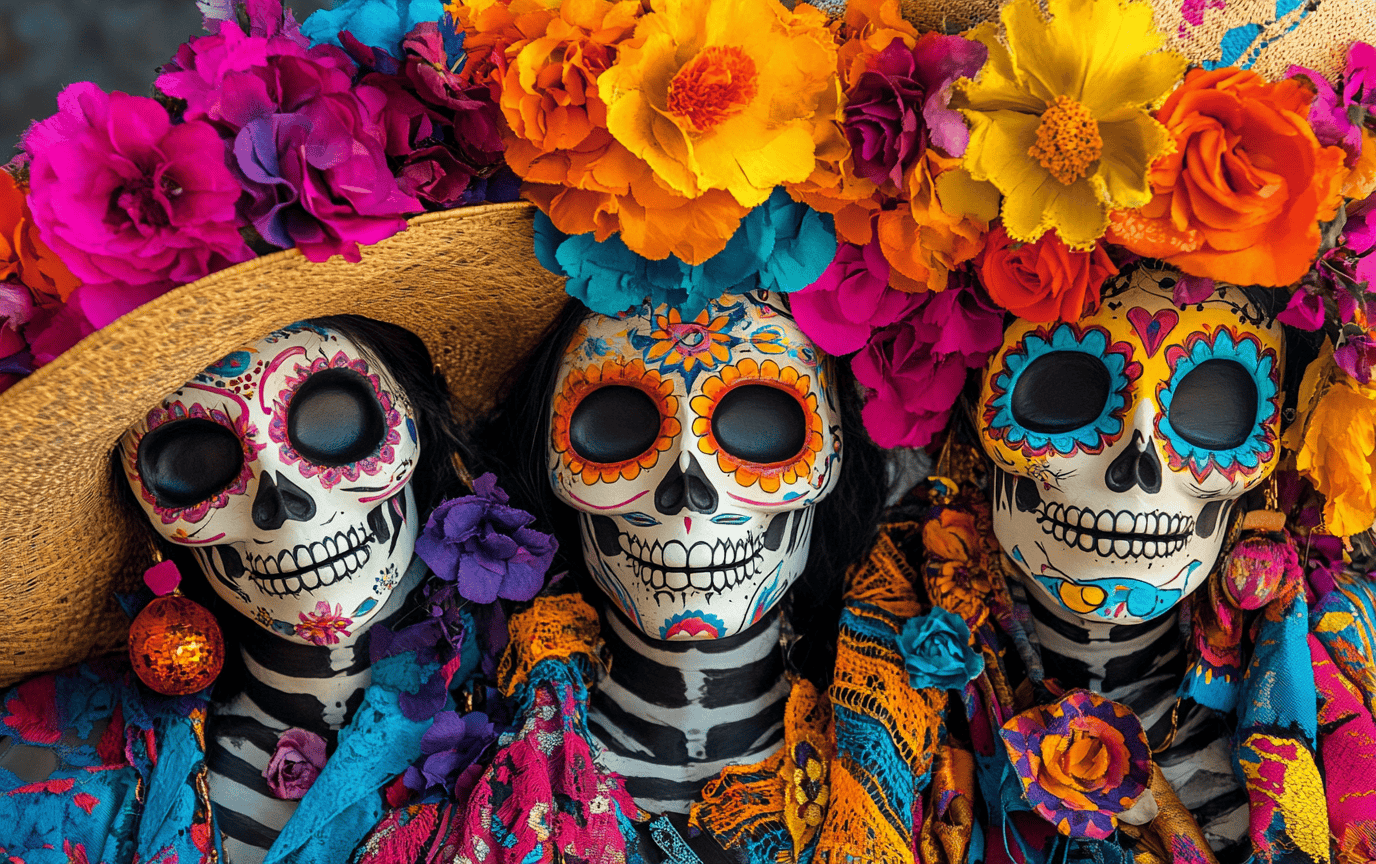The Cultural Significance of Mexican Day of the Dead
The air is thick with the scent of marigolds, their vibrant orange hues glowing against the backdrop of flickering candlelight. Laughter dances on the breeze as families come together, sharing memories and stories long after the loved ones have departed. The Mexican Day of the Dead, or Día de Muertos, is not merely a holiday; it’s a profound celebration that embraces the cycle of life and death. It is a moment when the veil between the worlds is thin, allowing the spirits of the deceased to return and immerse themselves in the warmth of love and remembrance. This ancient ritual, rich in cultural meaning, offers a glimpse into the heart of Mexican traditions and invites all to partake in a shared experience of joy, sorrow, and togetherness.
Origins and History
Día de Muertos finds its roots deep within the sacred soil of Mesoamerica, where ancient civilizations like the Aztecs venerated death as a passage, not an end. Their belief system was complex; to them, death was a necessary component of life’s cycle. The Aztecs honored their ancestors with elaborate ceremonies lasting several days. Priests would lead the grieving families in rituals that connected the living with the spirits, ensuring the deceased were guided safely into the afterlife.
When the Spanish arrived, they encountered these rich traditions, often blending them with Catholic fervor. The celebration now aligns with the Christian observances of All Saints’ Day and All Souls’ Day, merging the two worlds into a festival that honors both indigenous and Christian beliefs. By retaining ancient customs while integrating new elements, Día de Muertos has transformed into a beautiful amalgam of culture and spirituality, celebrated widely from October 31st to November 2nd.
Celebrations and Traditions
As the calendar turns, families prepare their homes and hearts for the arrival of their loved ones. The celebrations typically commence on October 31st, building momentum through to November 2nd. Each day possesses its own significance:
October 31: A Gentle Reminder
On this eve, the spirits of the unborn and those who departed in infancy are believed to return, the air heavy with the innocence of those never fully alive. This day carries a hushed reverence, where families pay homage to the fragile beginnings of life.
November 1: A Day for Innocents
On Día de los Inocentes, the focus shifts to children who have passed away. Families set ofrendas—altars adorned with photographs, favorite toys, sweet breads, and other cherished offerings. This is a powerful reminder of the pain and joy intertwining life and loss.
November 2: A Festival of Remembrance
Finally, November 2nd is Día de Muertos, a jubilant celebration that honors adults who have died. The festivities are vibrant—people paint their faces like calaveras (skulls), donning colorful clothing adorned with flowers. Music fills the streets, and laughter echoes in neighborhoods as people honor their ancestors in joyous remembrance.
At the core of these celebrations are the ofrendas—altars built with great care and devotion. Each family constructs a space that provides comfort to the returning souls. Adorned with cempasúchil, the marigold flowers that lead the dead home with their scent, and copal incense wafting through the air, these altars are a visual feast. Pan de muerto, a sweet bread shaped like a skull or bones, is placed alongside photographs and personal treasures of the departed, inviting their spirits to partake in the festivities, bathed in love and remembrance.
Cultural Significance and Symbols
The symbols associated with Día de Muertos resonate deeply with Mexican culture, each one telling a tale that transcends generations. La Catrina, the elegantly dressed skeletal figure created by José Guadalupe Posada, reigns supreme. She reminds everyone that death is an indiscriminate force; it will come for us all, regardless of wealth or social standing. She’s both a reminder of mortality and an emblem of the celebration of life, her flamboyant style encouraging humor in the face of the inevitable.
Another beloved tradition is the calaveras literarias, humorous literary verses poking fun at the living—playful reminders that we cannot escape death’s embrace. They reflect not only the inevitability of mortality but also a philosophy of living fully, appreciating every moment before we join the souls who precede us.
Differentiation from Halloween
While Halloween and Día de Muertos may share dates, they are distinct in their essence. Halloween, with its roots steeped in ancient Celtic traditions, hinges on warding off dark spirits; its emphasis tends to be on fear and superstition. In contrast, Día de Muertos is a heartfelt celebration of life—an open invitation for loved ones to return home, to laugh and feast alongside the living. It embodies a distinct perspective on mortality, one that honors rather than fears the deceased.
Cultural Respect and Participation
For travelers wishing to partake in the festivities, it is vital to approach Día de Muertos with respect and understanding. Engaging with the traditions requires an acknowledgment of its cultural significance. One must avoid trivializing symbols, such as wearing costumes that mimic sacred imagery. Instead, immerse yourself in the essence of the celebration: learn the stories, support local artisans, and honor the memories of loved ones in a genuine and heartfelt manner. Dive deeper into the history and engage with local communities to experience the true spirit of the festival; it’s an opportunity for cultural exchange that enriches both visitors and hosts alike.
Conclusion
Día de Muertos is a beautiful reminder that life and death are intertwined, a cultural celebration that reflects deep respect for the passage of life. It teaches us to embrace our mortality and to find joy in the memories of those we love. Through colorful ofrendas, joyous gatherings, and rich traditions, families draw near to honor the spirits of those who walked before them. They cultivate a sense of belonging that transcends the physical realm, reminding us that while we may lose loved ones, their essence can live on through love and memory.
As the world continues to change and cultures converge, Día de Muertos offers a unique opportunity to share in the beauty of remembrance and to connect across borders. By embracing this celebration, we open ourselves to the wisdom of understanding life’s cycles—of laughter woven with tears, and love everlasting.
Experience the vibrant traditions of Mexico with uncover Mexico’s hidden gems, join global celebrations in 10 must-experience festivals around the world, and deepen your cultural knowledge with 12 surprising rituals around the globe.
Want to stay updated on the latest travel tips? Check out our Travel Tips section.
Looking for lifestyle inspiration? Explore our Lifestyle category.
Discover amazing Destinations.
Want more insightful content? Subscribe to our YouTube channel and follow our adventures on Instagram, and engage with us on Pinterest.













